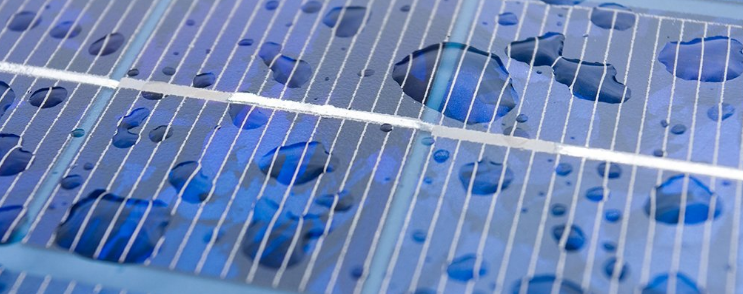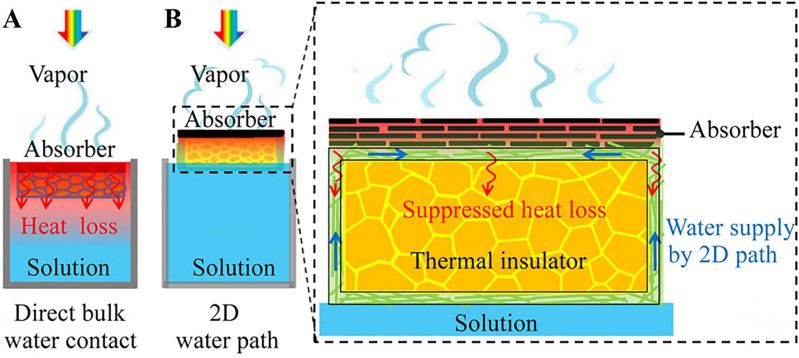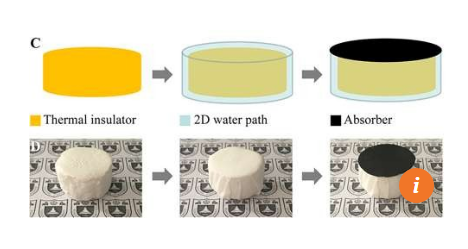New Solar Panel Produces Fresh Water
Published on by Water Network Research, Official research team of The Water Network in Technology
Chinese scientists have developed a thin carbon film that generates a large, free supply of fresh water from the ocean using only the power of the sun.

Each hour, one square metre of the material spread over salt water can produce 1.45 litres of fresh water under normal sunlight, according to their research paper published in the Proceedings of the National Academy of Sciences in the United States this week.
The amount of fresh water the film can produce more than meets the drinking needs of a typical family. About 1.2 litres per day is enough to keep a person healthy, according to British health authorities.

The research team at Nanjing University in Jiangsu province created the film using graphene, a nanotechnology material comprising carbon sheets one atom thick arranged in a honeycomb-shaped lattice to absorb sunlight.
The film uses more than 94 per cent of the energy from the sunlight to produce water vapour by heat. The temperature on the film rises from 13 to 32 degrees Celsius within a minute under the sun.
There have been many attempts to use graphene for desalination, but all suffered low efficiency. The biggest problem occurred when the graphene came into direct contact with sea water, as most of the heat would dissipate in the ocean.

The Chinese team, led by professor Zhu Jia, solved the problem with a thermal insulator made of plastic foam. This separates the graphene film from the large body of water underneath.
A small tube transports the water to the graphene. The force generated by heat and evaporation happening at the top of the film lifts the cold water from underneath it.
The light-weight device is also foldable, perfect for travellers, campers or settlers on remote islands. It can also be mass-produced.
The researchers tested the material in water with different salinity levels representing different bodies of water including the North Sea and Red Sea.
They found that the film continuously produced vapour for hours with no decrease in performance. Some salt formed on the surface, but this was easily washed away by ebbing water.
The report gave no precise estimate to the price of the graphene sheets. In addition, the experiments had only been carried out in a laboratory, so it remained unclear how the delicate material could withstand real environmental elements such as strong winds and rough seas.
“This entire device is based on low-cost materials and scalable processes, therefore providing a complementary portable water solution, particularly beneficial for developing countries and remote areas,” the authors wrote.
The technology would also benefit “many other potential applications, such as sterilisation and chemical purification,” they added.
Source: South China Morning Post
Media
Taxonomy
- Solar Energy
- Energy-Water Nexus
- Renewable Energy
- Solar Power
- Graphene